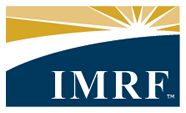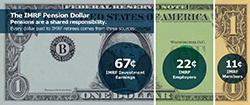You contribute 7.5% of your salary toward your future IMRF pension:
- 3.75% for a regular plan benefit
- 3.00% for the additional SLEP benefit
- 0.75% for a surviving spouse pension
If you do not have an eligible surviving spouse when you retire, you can take your surviving spouse contributions as a lump sum refund or you can convert them into a separate lifelong pension payment.
If you do not have at least ten years of SLEP service credit when you retire, you will retire under the Regular plan if you have either:
- Eight or more years of Regular Tier 1 or a combination of Regular Tier 1 and SLEP service credit
- Ten or more years of Regular Tier 2 or a combination of Regular Tier 2 and SLEP service credit
You can take your additional SLEP contributions as a lump sum refund or you can convert them into a separate lifelong pension payment.
Under Tier 2, a member's wages are capped at $127,283.01 in 2025 and $129,192.26 in 2026. You do not pay any contributions on wages above the cap. Even though wages aren't reported, you will continue to earn service credit. In addition, you do not pay any contributions on overtime wages.
What You Get By Contributing to IMRF
Once you are eligible for an IMRF pension you are guaranteed your pension for life. When you start receiving your IMRF pension, you will likely receive the total amount of your contributions back within the first few years of your retirement. The remaining lifelong pension payments you receive will be paid by your employer's contributions and investment earnings. This is why your IMRF pension is such a valuable benefit.
IMRF also provides important disability and death benefits.
You Never Lose Your Contributions
You are guaranteed a return of your IMRF contributions, paid as either:
- Your IMRF pension
- A refund
- Death benefits
Participation in IMRF is Required
If you are working in a position that qualifies for IMRF you must contribute -- IMRF is not an optional program. (There are exceptions for city hospital workers and elected officials.)
You Cannot Borrow from Your IMRF Contributions
You cannot borrow from your contributions or use them as collateral for a loan. As long as your contributions are on deposit with IMRF, they cannot be garnished or seized by any creditor.
Contributions are Tax-Deferred
You do not pay federal or Illinois income tax on the money used to make your contributions.



